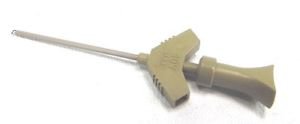Universal Interface Board for the ST-V LCD Selector
While talking to @Apocalypse awhile ago I had an idea to use the current ST-V LCD Selector (made by @miisalo ) as a Universal selector for all the multi's that use dip switches for game selection. I had purchased one to use on a ST-V board I had bought, but that ended up being dead. So after having a quick look at how the selector works it look as though with a little programming, the menu could be changed to represent any multi that used dip switch style selection. However there is one major issue with the M72, C2 and at the time S16 multi's. There is no way to easily install the reset wire required to reboot the board with the newly selected game. So I got to thinking about possible solutions and came up with this.
A Universal Multi JAMMA Pass-through
As a disclaimer it was only going to be a pet project to encourage me to learn Arduino programming and PCB design. I have not discussed the re-purposing of the ST-V LCD selector with @miisalo and if he doesn't like it being used or if he wants to take over and make this himself that is fine by me.
My idea basically consists of a modified Jamma pass-through that contains the following:
If this is posted in the wrong part of the forum please feel free to move it mods.
Link to ST-V ST-V multicart game selector with LCD screen
While talking to @Apocalypse awhile ago I had an idea to use the current ST-V LCD Selector (made by @miisalo ) as a Universal selector for all the multi's that use dip switches for game selection. I had purchased one to use on a ST-V board I had bought, but that ended up being dead. So after having a quick look at how the selector works it look as though with a little programming, the menu could be changed to represent any multi that used dip switch style selection. However there is one major issue with the M72, C2 and at the time S16 multi's. There is no way to easily install the reset wire required to reboot the board with the newly selected game. So I got to thinking about possible solutions and came up with this.
A Universal Multi JAMMA Pass-through
As a disclaimer it was only going to be a pet project to encourage me to learn Arduino programming and PCB design. I have not discussed the re-purposing of the ST-V LCD selector with @miisalo and if he doesn't like it being used or if he wants to take over and make this himself that is fine by me.
My idea basically consists of a modified Jamma pass-through that contains the following:
- 2 dual channel relays to switch the 5V and 12V supplies to the PCB
- a transistor to drive the relay coils from the existing Reset signal from the LCD selector.(P4 or 5) This comes from one of the channels of a 4066 CMOS which cant itself drive the relay coils.
- a connector for the power supply to the LCD selector.(P1) This is obviously fed from the supply side of the board as we want to maintain power to the selector throughout the reboot process.
- a connector for the dip switches (P2) This should be enough channels to drive all the multi's dip switches. This is basically a pass-through to another connector.
- a connector to attached the dip switch jumpers from the multi to the pass-through board. I figure this is easier as you would just need to change the the jumper cable from the multi board rather than from the selector itself.
- also a LCD display for monitoring the 5v and 12v supply from the cabinet.
If this is posted in the wrong part of the forum please feel free to move it mods.
Link to ST-V ST-V multicart game selector with LCD screen
Last edited:




